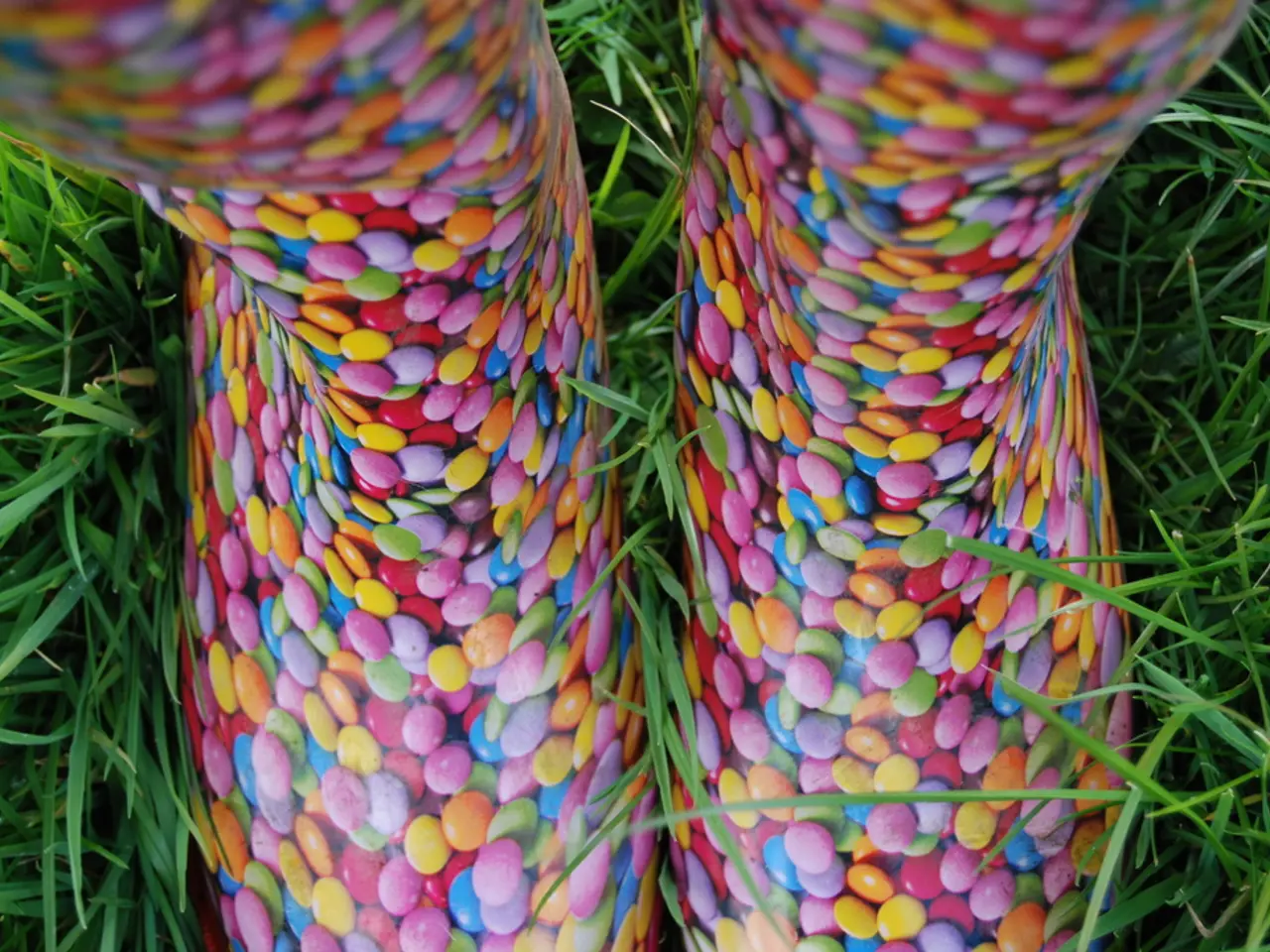Investigating Gemstone Luminescence: Seeking the Radiant Glow
In the fascinating world of gemstones, fluorescence serves as a crucial visual aid for identifying and verifying the authenticity of natural gems, synthetics, and simulants. This non-destructive testing method, when used alongside traditional techniques like thermal and electrical conductivity tests, provides a more accurate means of gem identification.
At its core, fluorescence is the visible light emitted by a gem material after the original source of exciting radiation has been switched off. This phenomenon occurs when a gemstone is illuminated by radiation of shorter wavelengths with higher energy, such as ultraviolet (UV) light.
When testing green gemstones, fluorescence can be tricky for identification purposes. However, it may be useful in recognising the presence of fillers in emeralds or green jadeite jade. For instance, untreated green jadeite does not fluoresce, so any other reaction should be regarded with suspicion and further testing will be needed.
Fluorescence can indicate or confirm the identity of a stone. For example, citrine quartz is inert to fluorescence due to the presence of iron, which eliminates fluorescence. On the other hand, some gemstones like diamonds, scapolite, moss agate, and various varieties of quartz exhibit unique fluorescence patterns.
In terms of red and pink gemstones, natural rubies may have minimal to no fluorescence due to their iron content. Synthetic rubies, however, tend to have much stronger fluorescent reactions.
When using UV light to test gemstones, it is important to remember that any exposure to UV light can damage eyes, particularly short wave UV. Always wear protective UV goggles or ensure that your UV cabinet is installed with an eyepiece that filters out UV light.
The types of UV light used in testing gemstones are long wave (LWUV) with a principle wavelength of 365nm and short wave (SWUV) with a principle wavelength of 254nm. The 'Stokes Law of Fluorescence' or 'Stokes Shift' states that the fluorescent emission of light will always be of a longer wavelength than the excitation source.
In summary, fluorescence testing is a valuable complementary method in gemmology, offering distinct fluorescence patterns exhibited by certain natural gems and their synthetic counterparts or simulants. By understanding these patterns, gemmologists can make more informed decisions about the authenticity and identity of the stones they are testing.
[1] Source for diamond fluorescence information [2] Source for scapolite, moss agate, and quartz fluorescence information [3] Source for moissanite and diamond differentiation information [5] Source for moss agate authenticity information
- When testing the authenticity of diamonds, it's imperative to understand their unique fluorescence patterns, as stated in the article [1].
- For those interested in exploring the fluorescence patterns of gemstones like scapolite, moss agate, or various quartz varieties, further details can be found in the publications [2].
- In the realm of technology, advanced equipment incorporating UV light for gemstone testing can aid in the differentiation between moissanite and diamonds, as reconciled through research [3].
- Lifestyle enthusiasts venturing into the world of gemmology will find a wealth of knowledge about the identification of natural and synthetic gemstones through membership in relevant organizations offering comprehensive courses and workshops [4].
- For those wanting to ensure the authenticity of their moss agate pieces, the common identification methods and best practices can be found in numerous specialized gemmology publications [5].




